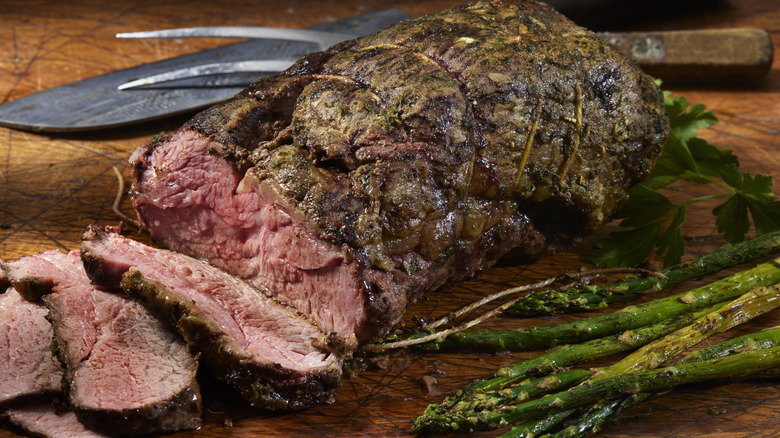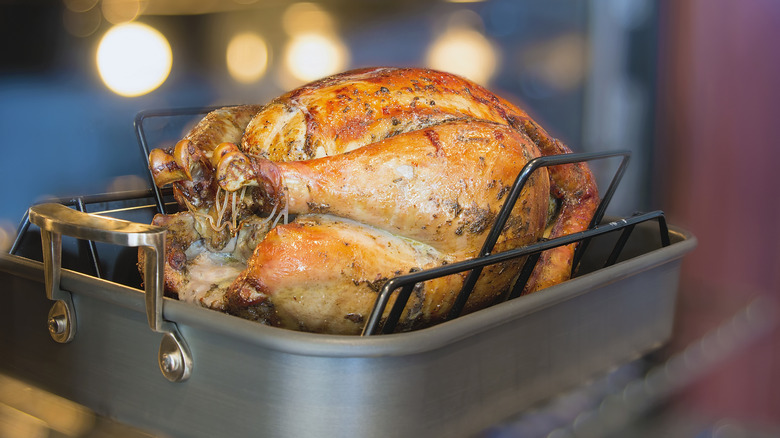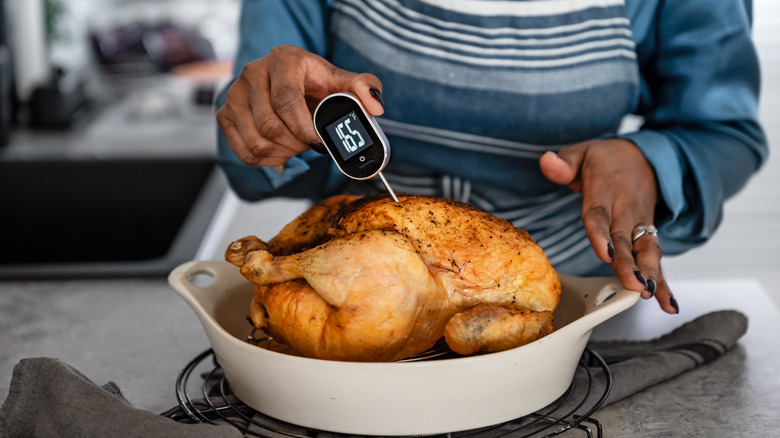The Silverware Hack For An Improvised Roasting Rack In A Pinch
Roasting pans with racks are quite helpful in the kitchen, but not everyone has easy access to a full set of cookware. However, most of us do have essential kitchen tools and utensils, like spoons, which are all you need to create a makeshift roasting rack in no time at all. The number of spoons will vary depending on the size of the meat you're roasting, but it's likely you'll use at least four. To make the rack, place a row of spoons on a roasting pan upside down, with each spoon pointing in the opposite direction from the one next to it. The meat gets placed on top of the spoons.
Creating a DIY roasting rack with spoons is not only convenient, but it can also save you some money on cookware. If you don't roast food that often, you may never need to buy a real roasting rack. This simple yet impressive hack is also quite versatile, as it can be used to roast vegetables like carrots, potatoes, and cauliflower, as well as meat.
Why is elevating food when roasting important?
Roasting pans are beneficial for cooking sizeable portions of meat, such as a whole ham, turkey, or chuck roast. Because of their taller sides, drippings are captured below, and the roasting rack raises the meat up, so that it never touches the bottom of the pan. This rack plays a key role in cooking meat to perfection. It allows for hot air to circulate completely around the meat (or whatever you are roasting). Even heat distribution is key.
Elevating the meat alleviates potential issues, like meat burning to the bottom of a hot pan, and ensures the food is uniformly cooked. Additionally, roasting pans are ideal for making sauces and gravies, as you can use the juices from the meat that have collected in the bottom of the pan. Using a row of upside down spoons raises the meat off of the pan and allows the air to circulate.
Best practices when roasting meat
Whether you're using the silverware hack or a conventional roasting pan, there are a few important things to keep in mind when roasting meat. When it comes to food safety, always use a meat thermometer, and be sure you placed the meat thermometer in the right part of the roast. According to the USDA, all meat must reach a certain internal temperature to reduce the risk of food borne illness. With beef, pork, and ham, the internal temperature must reach 145 degrees Fahrenheit. As for poultry, 165 degrees is the minimum internal temperature.
In terms of cooking to proper doneness, turning over the meat as it cooks ensures that each side receives a uniform amount of heat. And after removing the meat from the oven, allow it to rest for at least ten minutes before slicing. (A rest period ensures that the juices inside meat stay put and are not lost.) You don't need fancy cookware to prepare a delicious roast, you just need some spoons, a pan, and to use the best practices.


